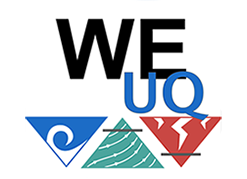The WE-UQ Application is an open-source software that provides researchers a tool to assess the performance of a building subjected to wind loading. The application is focused on quantifying the uncertainties in the predicted response, given that the properties of the building and the wind loads are not known exactly, and given that the simulation software and the user make simplifying assumptions in the numerical modeling of the structure. In the application, the user is required to characterize the uncertainties in the input. The application will, after utilizing the selected sampling method, provide information that characterizes the uncertainties in the response measures.
The computations to make these determinations can be prohibitively expensive. To overcome this impediment the user has the option to perform the computations on the Frontera supercomputer. Frontera is located at the Texas Advanced Computing Center and made available to the user through NHERI DesignSafe, the cyberinfrastructure provider for the distributed NSF funded Natural Hazards in Engineering Research Infrastructure (NHERI) facility. The computations are performed in a workflow application. That is, the numerical simulations are actually performed by a number of different applications. The WE-UQ backend software runs these different applications for the user, taking the outputs from some programs and providing them as inputs to others. The design of the WE-UQ application is such that researchers are able to modify the backend application to utilize their own application in the workflow computations. This will ensure researchers are not limited to using the default applications we provide and will be enthused to provide their own applications for others to use.
Read the WE-UQ Application Summary (V4.2).
To help expand the workflow capabilities with your contributions, contact NHERI-SimCenter@berkeley.edu.
Characterizing the Atmospheric Boundary Layer Flow in CFD Simulations using WE-UQ
Dr. Fei Ding, Postdoctoral Scholar, UC Berkeley
February 24, 2023
Desktop App
Downloadable app that performs simulations locally or on DesignSafe computing resource
Web Portal
Web portal app that performs simulations on DesignSafe computing resources.
How to cite:
Frank McKenna, Abiy Melaku, Fei Ding, Peter Mackenzie-Helnwein, Michael Gardner, Sang-ri Yi, Aakash Bangalore Satish, & Wael Elhaddad. (2025). NHERI-SimCenter/WE-UQ: Version 4.2.0 (v4.2.0). Zenodo. https://doi.org/10.5281/zenodo.14895011
Deierlein, G.G., McKenna, F., et al. (2020). A Cloud-Enabled Application Framework for Simulating Regional-Scale Impacts of Natural Hazards on the Built Environment. Frontiers in Built Environment. 6, 196. doi: 10.3389/fbuil.2020.558706.
